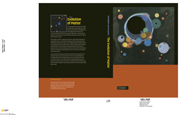Book contents
- Frontmatter
- Contents
- Introduction
- Part I The elements
- Part II Early solar system: nebula formation, evolution and lifetime
- Part III Accretion of the Earth
- Part IV Global evolution of the Earth
- 22 First look at the Earth
- 23 The plate-tectonic concept: some phenomenology
- 24 Ocean-ridge and island magmatism
- 25 Subduction and island-arc magmatism
- 26 Composition of the continental crust: magmatic, metamorphic and sedimentary processes
- 27 Isotopic records of the evolution of Earth's accessible reservoirs
- 28 Geochemical Earth model
- References
- Glossary
- Abbreviations
- Meteorites, rocks and minerals
- Index
28 - Geochemical Earth model
Published online by Cambridge University Press: 04 September 2009
- Frontmatter
- Contents
- Introduction
- Part I The elements
- Part II Early solar system: nebula formation, evolution and lifetime
- Part III Accretion of the Earth
- Part IV Global evolution of the Earth
- 22 First look at the Earth
- 23 The plate-tectonic concept: some phenomenology
- 24 Ocean-ridge and island magmatism
- 25 Subduction and island-arc magmatism
- 26 Composition of the continental crust: magmatic, metamorphic and sedimentary processes
- 27 Isotopic records of the evolution of Earth's accessible reservoirs
- 28 Geochemical Earth model
- References
- Glossary
- Abbreviations
- Meteorites, rocks and minerals
- Index
Summary
Introduction to geochemical modelling
Generally, quantitative models are considered as the most advanced, final, step in the interpretation of experimental and analytical data. Three types of chemical evolutionary Earth model may be distinguished (in order of increasing complexity): (1) transport chemical models envisaging distinct homogeneous reservoirs and applying mainly mass-balance considerations (e.g. O'Nions et al., 1979; Jacobsen and Wasserburg, 1979); (2) transport chemical models that take the temporal preservation of chemical and isotopic heterogeneities within reservoirs into account, highlighting the behaviour of the species within each reservoir (Kellogg et al., 2002); (3) physical models with chemical tracers in them (Christensen and Hofmann, 1994; van Keken et al., 2002; Samuel and Farnetani, 2003).
The models are best applied progressively, increasing the complexity only when simpler approaches and their deficiencies are understood. In this chapter we discuss the simplest model involving the transfer of material and species between distinct principal long-lived terrestrial reservoirs. The model includes two major stages of Earth history, accretion (Chapters 18 to 20) and post-accretion evolution. The data related to the isotopic systems modelled, 244Pu–Xe(Pu), 129I–129Xe(I), 40K–40Ar, U–Th–He–Ne, 147Sm–143Nd, 87Rb–87Sr, 176Lu–176Hf and 87Rb–87Sr, were discussed in the previous chapter.
It should be emphasized that neither the model itself (Section 28.2) nor its reference solution (Section 28.3) are unique: they only illustrate one possible way to describe the Earth's materials, and the processes transferring and developing them, within the frame of a self-consistent semiquantitative concept, applying reasonable input parameters.
- Type
- Chapter
- Information
- The Evolution of MatterFrom the Big Bang to the Present Day, pp. 427 - 441Publisher: Cambridge University PressPrint publication year: 2008



